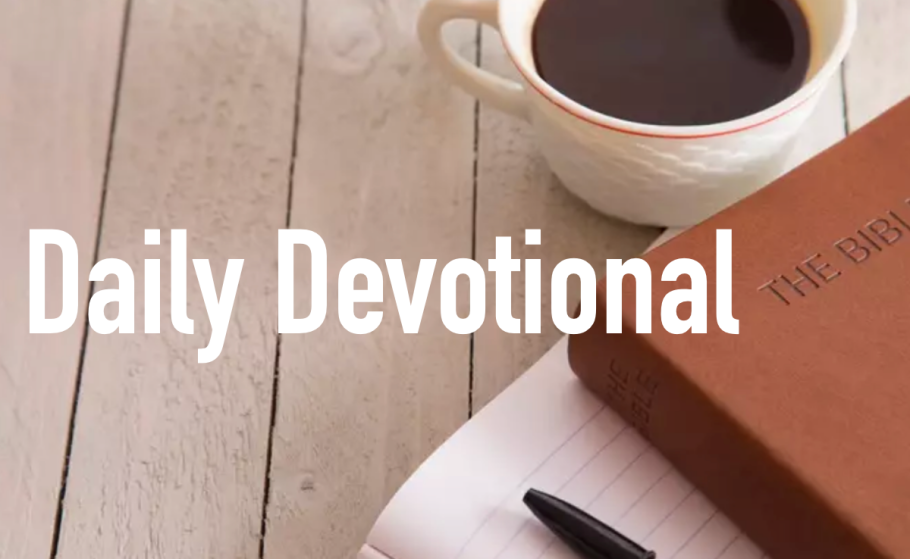
This past Christmas, our family visited the Art Institute of Chicago to view a special Nativity scene, a crèche from Naples, Italy, that dates to the eighteenth century. More than 200 figures (including people and animals), each made with exquisite care and artistry, were displayed. The scene included vendors and musicians alongside the shepherds and wise men. But Mary, Joseph, and baby Jesus were clearly at the center of it all.
The birth of Jesus was a long- awaited, life-changing event. But despite the importance of His birth, the moment was marked by humility. One would think the incarnate Son of God would be wearing a silk onesie or a royal baby outfit, but this wasn’t the case. Instead, Jesus was wrapped in simple “cloths”—linen strips that snugly swaddled the newborn to make Him comfortable (v. 7). In other words, He was dressed much as we might dress a baby today, although we use flannel blankets and baby clothes.
The circumstances surrounding the birth of Jesus were also humble, to say the least. Mary gave birth on the road, in Bethlehem. Jesus was born among animals and laid in a feeding trough. Many scholars now believe the family was staying with relatives, though no guest room was available (v. 7). Instead, they were housed on the first floor with the animals, a common arrangement at the time.
Nonetheless, Jesus was a descendant of David and God’s promised Messiah. Matthew’s genealogy shows Joseph to be of the line of David (Matt. 1:1–17; see also Luke 1:27). Luke 3:23–38 seems to trace His line via Mary, who was also of the line of David. The Roman Empire appears to be in control in the story, since the government ordered the census that took Mary and Joseph to Bethlehem (v. 1). But God was sovereignly orchestrating every detail to fulfill His promises of redemption.
What was the significance of Jesus’ baby clothes? Why do you think He arrived with such humble beginnings?
Jesus, at the incredible moment in history, You came into this world, full of sorrow. You came as a baby in humble surroundings, yet You bring good news to the lost and comfort those who mourn. We love You and praise You!

In English, we have many sayings related to clothing. For example: When I need to get work done, I “roll up my sleeves.” When I put on my best outfit, I say I’m “dressed to the nines.” If I don’t have a plan but am making it up as I go along, I’m “flying by the seat of my pants.” If I desire to understand and show empathy to someone, I’ll try to “walk a mile in their shoes.”
In Isaiah 61, clothing is also used figuratively, but here it indicates spiritual transformation. It’s part of the ministry of the Messiah. In “the year of the Lord’s favor,” He will proclaim good news to the poor, bind up the brokenhearted, and proclaim freedom for the captives and release for the prisoners (vv. 1–2). Jesus quoted these verses when He began His public ministry, announcing, “Today this scripture is fulfilled in your hearing” (see Luke 4:16–21).
Christ’s gospel turns the bad news of the Fall into the good news of redemption (vv. 2–3). Mourning is turned to joy. Ashes become a crown of beauty. The “spirit of despair” is replaced by a “garment of praise.” While some of the promises that follow (vv. 4–9) were fulfilled in the return from exile and the rebuilding of the Temple, other fulfillments still lie in the future, from our perspective in time.
As the Bride of Christ, we have been clothed with “garments of salvation” and dressed in “a robe of his righteousness” (vv. 10–11). When the Bridegroom returns—”the day of vengeance of our God” (v. 2)—all will rejoice that the wedding day has at last arrived! Paul also wrote of this truth: Because of Christ’s victory over death, the perishable will be clothed with the imperishable and the mortal with immortality (1 Cor. 15:53–54).
What has been transformed in your own life or your family by the gospel? Where would you be without Him? Who do you know who needs to hear this good news?
Lord, how we long for the day of Your return, the day when we’ll receive imperishable clothes and will be clothed with immortality. Our glorious Bridegroom, keep Your Bride watchful and praying! Come, Lord Jesus!

When Jesus healed the demoniac in Mark 5:1–20, the man’s condition was completely reversed. While possessed, the man had acted chaotically, cutting himself with stones and running around naked. After Jesus cast out the demons, however, the man behaved calmly and reasonably, sitting clothed and in his right mind at Jesus’ feet. Later he testified publicly “how much Jesus had done for him.”
Literally and figuratively, clothing in Scripture is used to symbolize a person’s inner spiritual condition. Today’s reading is the fourth vision of Zechariah. In it he saw the high priest, Joshua. The prophet was in exile in Babylon, while Joshua had returned from exile and was in Jerusalem. Joshua stood accused by Satan, the adversary, but the Lord Himself advocated for Joshua and rebuked Satan (vv. 1–2).
As the high priest, Joshua should have been wearing special priestly garments (see October 18), but in the vision he was wearing filthy clothing, covered with excrement and thus defiled (vv. 3–5; see Isa. 64:6). “The angel of the LORD”—likely the preincarnate Christ—reclothed him with fine garments and a clean turban. This symbolized forgiveness of sin (v. 4) and restored him to fitness for His priestly duties. Righteousness that was not his was imputed to him by God.
Joshua was then charged with obedience or covenant faithfulness (vv. 6–7) and given a promise of Messiah’s coming. Messiah is here pictured as a “Branch” (v. 8), as in Isaiah 11. He’s also pictured as a stone with seven eyes (v. 9), indicating omniscience and wisdom. He will remove the nation’s sin in a single day, just as He did for Joshua, who could do nothing for himself. God did it all. Messiah’s coming will also bringshalom—peace and well-being (v. 10).
What did the clean clothing in Zechariah 3 symbolize? Why does changing from filthy clothes to clean clothes provide a powerful picture of salvation?
Teach us, Lord, what it means to wear your “fine garments,” as today key verse says. Thank You that You give us new life in Christ, with “the oil of joy instead of mourning, and a garment of praise instead of a spirit of despair” (Isa. 61:3).

A good friend is a treasure. One study found that ten percent of women and fifteen percent of men say they do not have even one friend. Over the past 30 years, the percentage of women with more than ten friends has dropped from 28 percent to 11 percent. For men, the decline has been from 40 percent to 15 percent.
Against this backdrop, the biblical friendship of David and Jonathan speaks to us powerfully. Friendship between two such different people should never have happened. As rivals for the throne of Israel, they should have been enemies. Instead, by God’s grace they “became one in spirit” (v. 1). In Hebrew, this verse literally says, “The soul of Jonathan was bound with the soul of David.”
In 1 Samuel 18, David and Jonathan made a formal covenant of friendship (v. 3). It was partially signified by articles of clothing: Jonathan gave David his robe, tunic, sword, bow, and belt. This was a symbolic way of saying “all I have is yours” or “there’s nothing I wouldn’t do for you.” That was a committed friendship! They reaffirmed their promises later under even more unfavorable circumstances (see 1 Sam. 20:14, 17, 42).
Although Jonathan’s father, Saul, was “very angry” by David’s success (v. 8), presumably Jonathan was pleased by David’s military success and his popularity. We read that “from that time on Saul kept a close eye on David” (v. 9). After “an evil spirit” came upon Saul (v. 10), God used this friendship to save David’s life (1 Sam. 19–20). Jonathan not only rescued his friend from his father’s threats but also “helped him find strength in God” (1 Sam. 23:16). When Jonathan later died in battle against the Philistines, David used poetry to express his deep grief (see 2 Samuel 1).
What does the Bible teach about godly friendship? What is different or distinctive about a Christian friendship compared to a secular or worldly friendship?
The story of David and Jonathan’s friendship still resonates in our hearts! Lord, we all yearn for true friendship, for a friend who “loves at all times.” We pray for true, godly friends in our lives.

Moody professor Jim Coakley, in his award-winning book 14 Fresh Ways to Enjoy the Bible, analyzed Joseph’s clothing in Genesis 37-45: “Clothes/ garments are a pivotal element throughout the Joseph narrative...They appear at key transition points in the account when his status changes positively or negatively.” Every major plot change in the story is marked by a change in clothing.
Joseph’s story begins with a “coat of many colors,” as I learned through many Sunday School illustrations. Translators, though, are not sure of the exact meaning. The NIV says Joseph’s robe was “ornate” (v. 3). Another translation says “beautiful.” Others say “special tunic,” “vari-colored tunic,” “robe with long sleeves,” or “elaborately embroidered coat.” Some still have “robe of many colors.”
In any case, this special robe was a gift to Joseph from his father, Jacob, and a clear sign of parental favoritism (v. 3). You may think that Jacob should have known better. Predictably, the robe prompted envy and even hatred from his brothers (v. 4). Joseph, young and immature, did nothing to soften this reaction. Instead, he further stirred up his brothers’ feelings by bringing his father a bad report (v. 2) and sharing his dreams (vv. 5–11).
Joseph’s “ornate robe” makes two more key appearances in this story. First, his brothers stripped it off him before throwing him into a cistern (v. 23). Their initial plan was to murder their brother, though they ended up “only” selling him into slavery. They also dipped the robe in goat’s blood as a prop for their lie to Jacob (vv. 31–33), who concluded that a wild animal had killed his beloved son.
Despite all these tragic events, God remained in control. He had a loving plan for Joseph, Jacob’s family, and the Ancient Near Eastern world.
In what ways has sin marred your own family or relationships? How might you as a follower of Christ live redemptively in or even despite difficult situations?
Almighty God, we praise You that You are near to us. Your mercy never fails. You had a loving plan for Joseph and for Jacob’s whole family, and we trust that You have a plan for our lives as well. Bless Your holy name!

